Jellyfish
Oceanogràfic is immersed in the world of jellyfish. They are curious, mysterious animals made up of 95% water.
The largest exhibit of jellyfish in Europe is made up of cnidarians distributed in different tanks, as well as informative panels and informative comics.Access building: an aquarium and three cylinders with tropical species.Mediterranean: Five aquariums with the species corresponding to this sea.Oval Room: An aquarium with upside-down jellyfish, and also a panel with illustration by Paco Roca showing the evolution of man and the marine world.Temperate: Six aquariums with different species and polyps.
Barrel jellyfish
Rhizostoma pulmo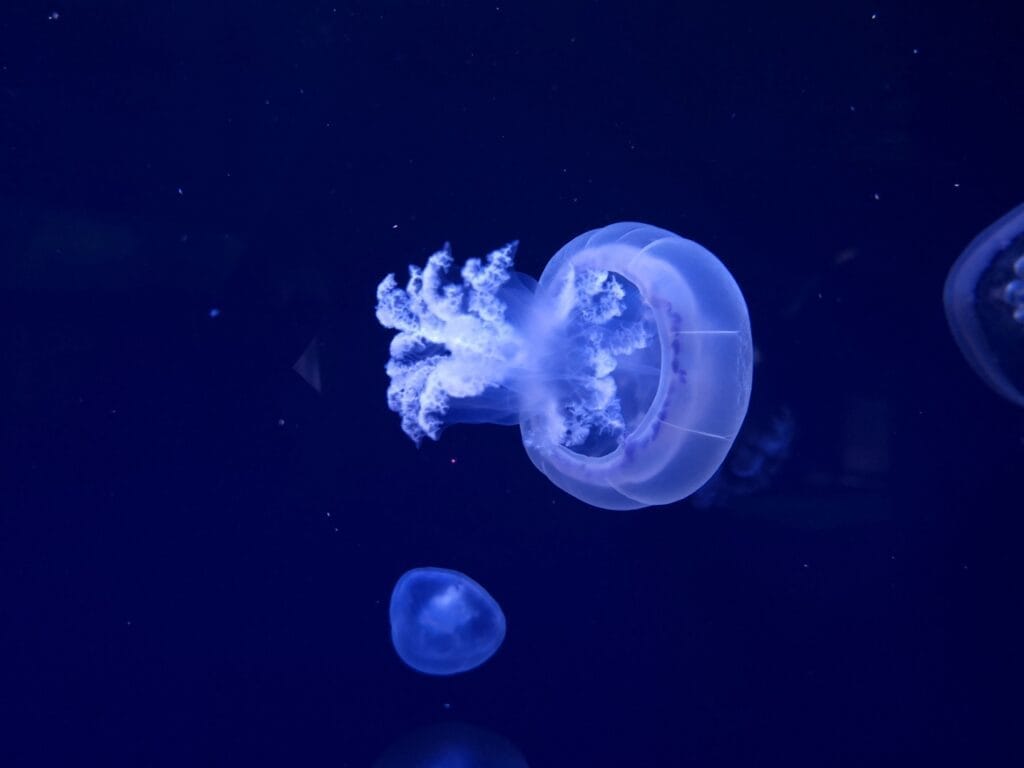
The barrel jellyfish (Rhizostoma pulmo) is one of the largest jellyfish of the Spanish Mediterranean coast.
Common jellyfish
Aurelia aurita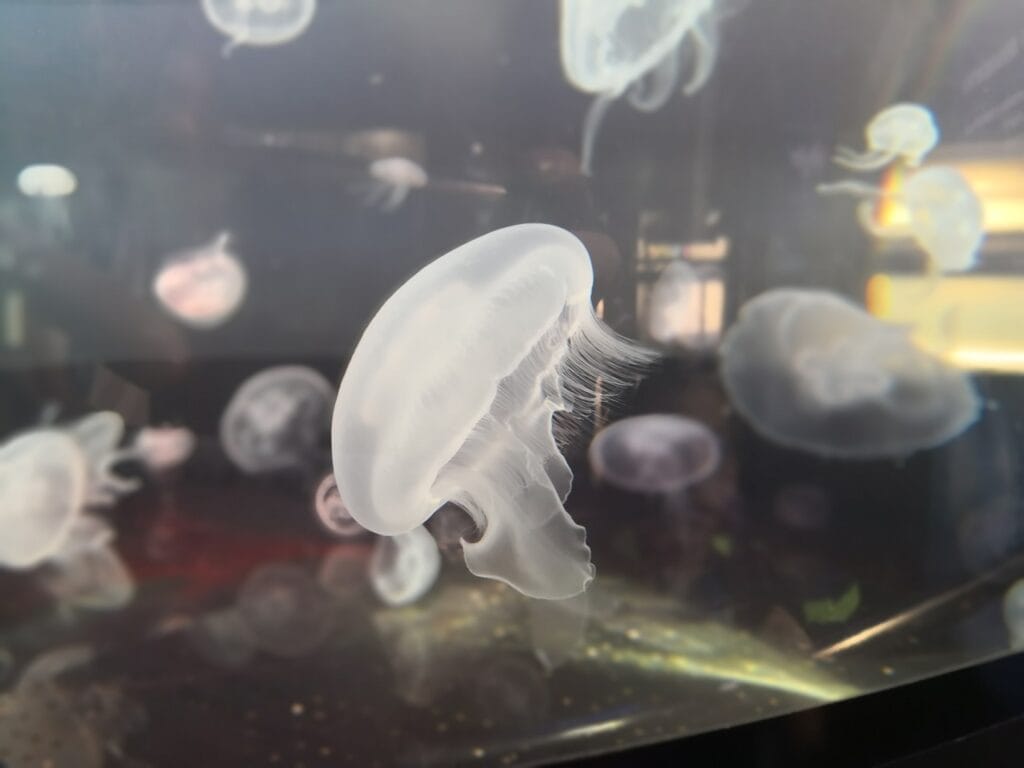
The moon jellyfish or common jellyfish (Aurelia aurita) is a cosmopolitan species present in all seas of the world.
Flame jellyfish
Rhopilema esculentum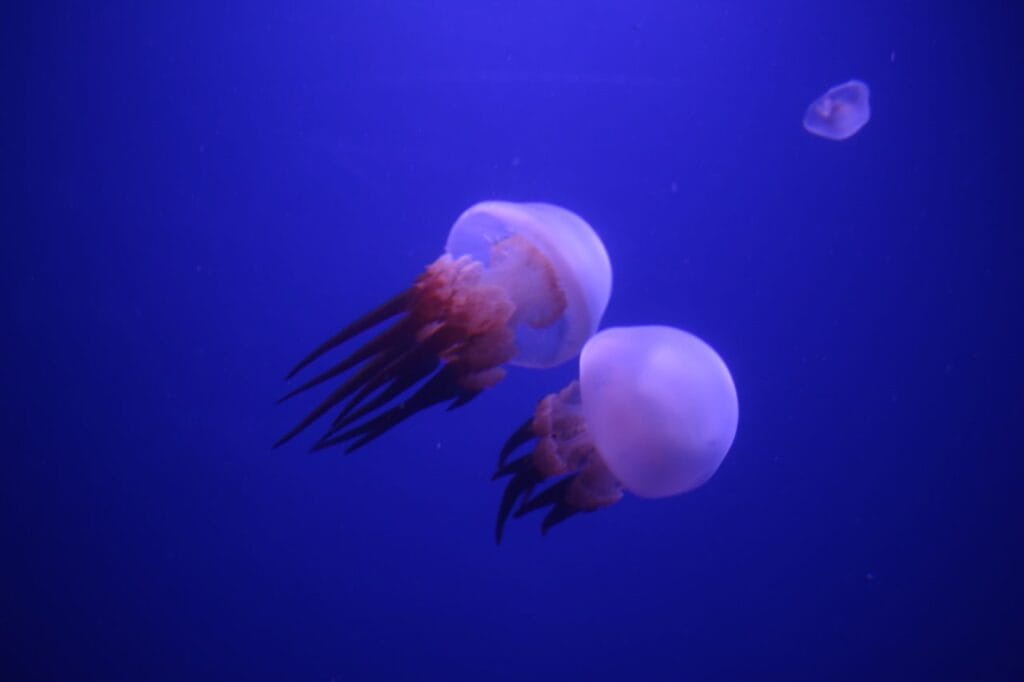
This type of jellyfish lives mainly in the northwest Pacific, specifically in China and Japan.
Fried egg jellyfish
Phacellophora camtschatica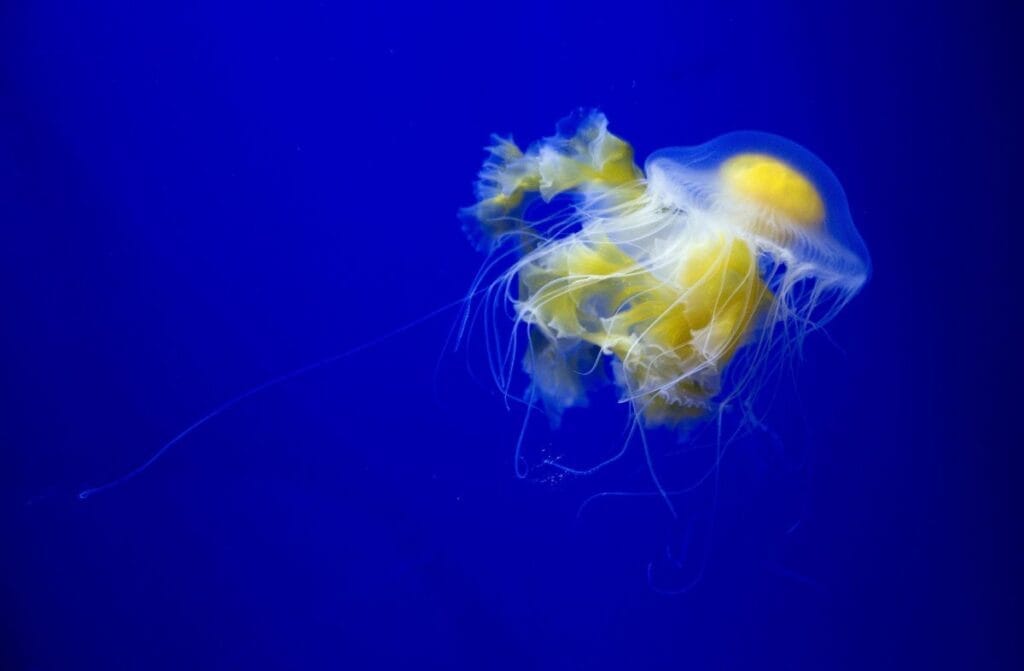
The fried egg jellyfish (Phacellophora camtschatica) can measure up to 6 metres from its bell to the end of its tentacles.
Japanese sea nettle
Chrysaora pacifica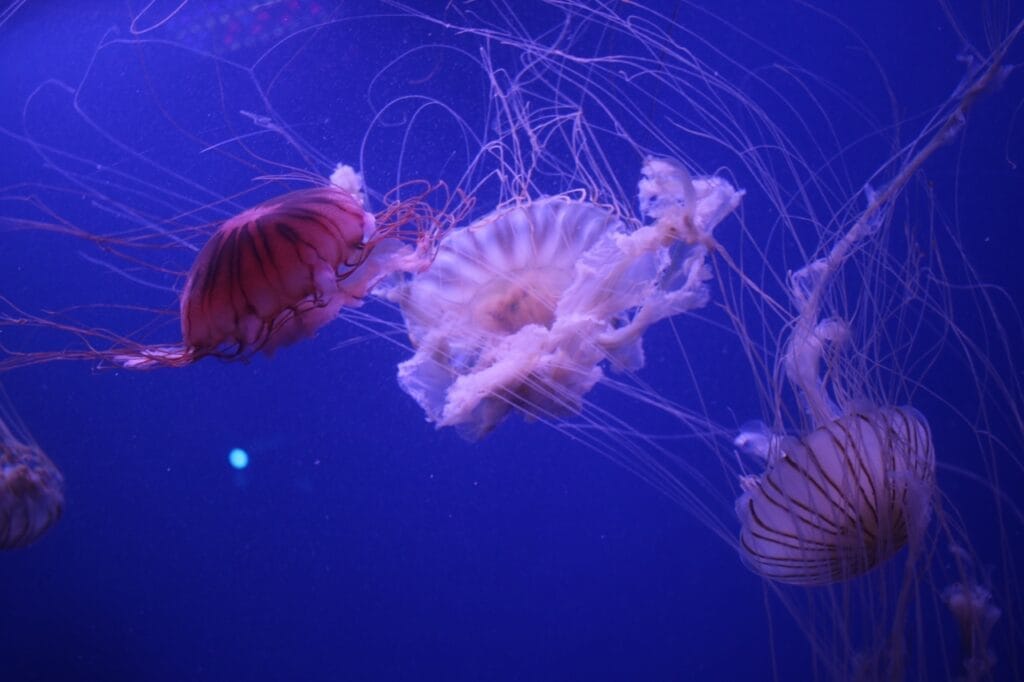
The Japanese sea nettle (Chrysaora pacifica) is a species which can measure up to 3 metres from the bell to the end of its tentacles.
Jelly blubber
Catostylus mosaicus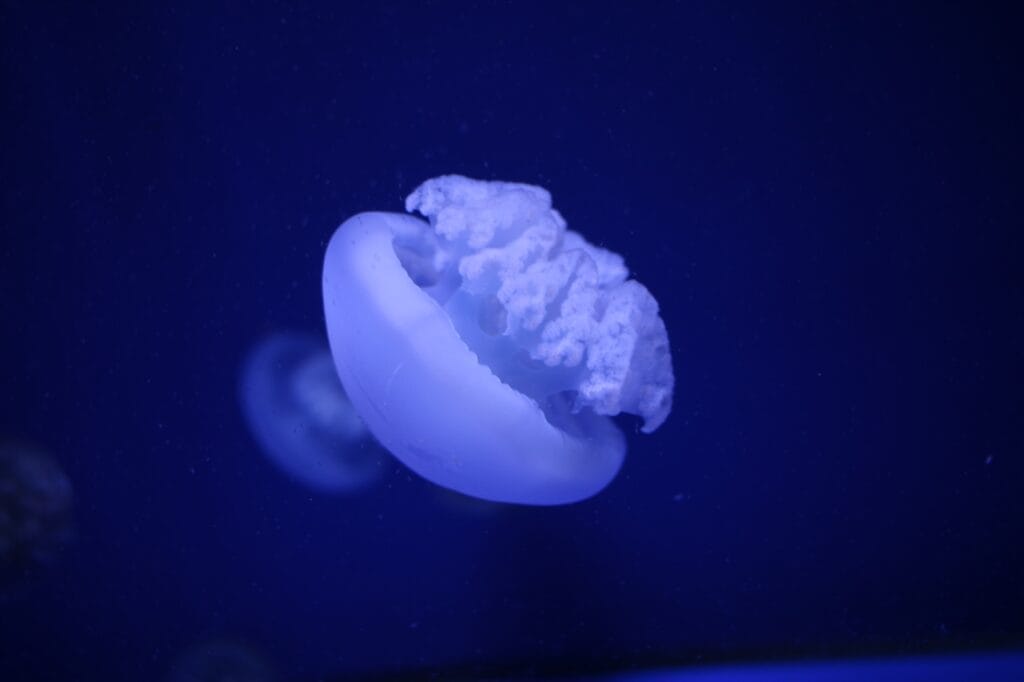
The jelly blubber (Catostylus mosaicus) is the most common jellyfish in the waters of Australia, although it is an invasive species in the Mediterranean.
Mauve stinger
Pelagia noctiluca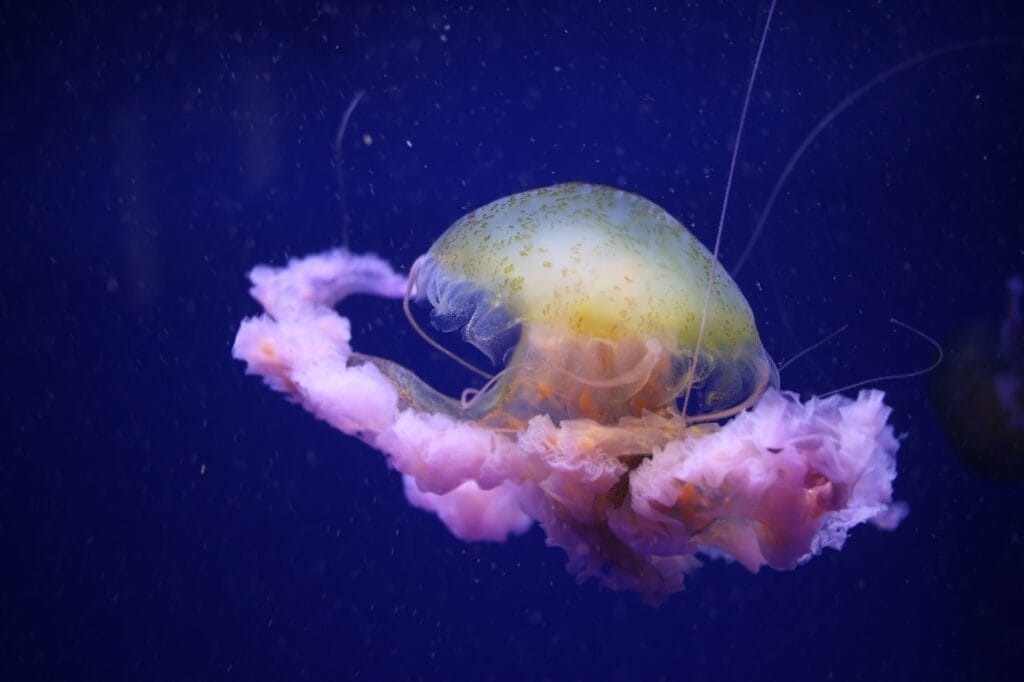
The mauve stinger (Pelagia noctiluca) is considered one of the most abundant and important jellyfish in the western Mediterranean.
Medusa huevo frito
Cotylorhiza tuberculata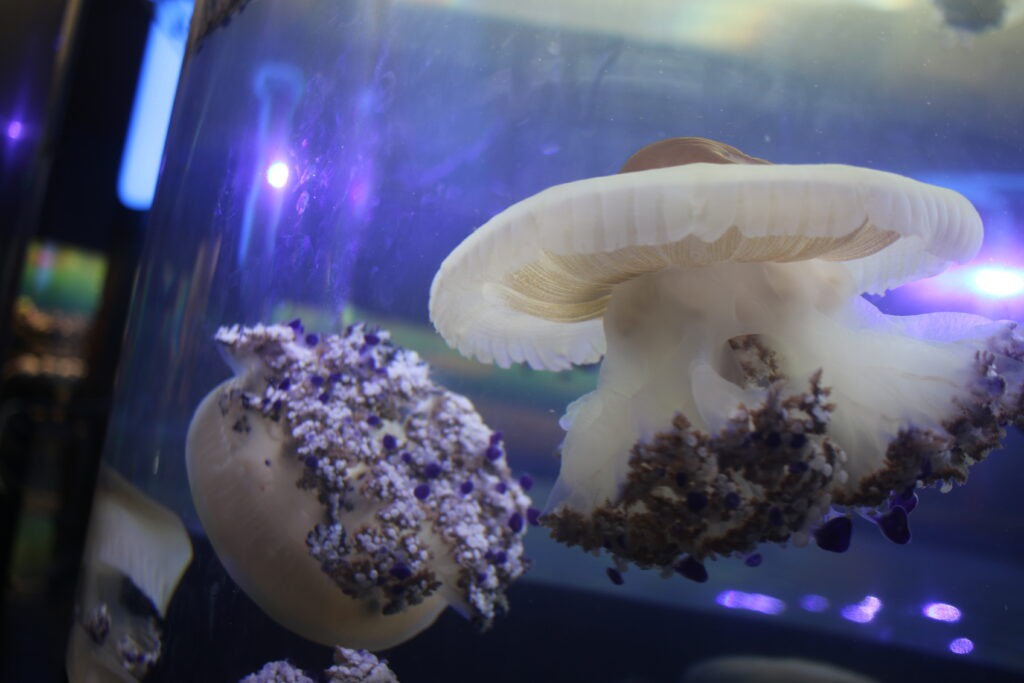
La medusa huevo frito (Cotylorhiza tuberculata) es una especie endémica del Mediterráneo, costanera y con preferencia de aguas más cálidas.
Moon jellyfish
Aurelia labiata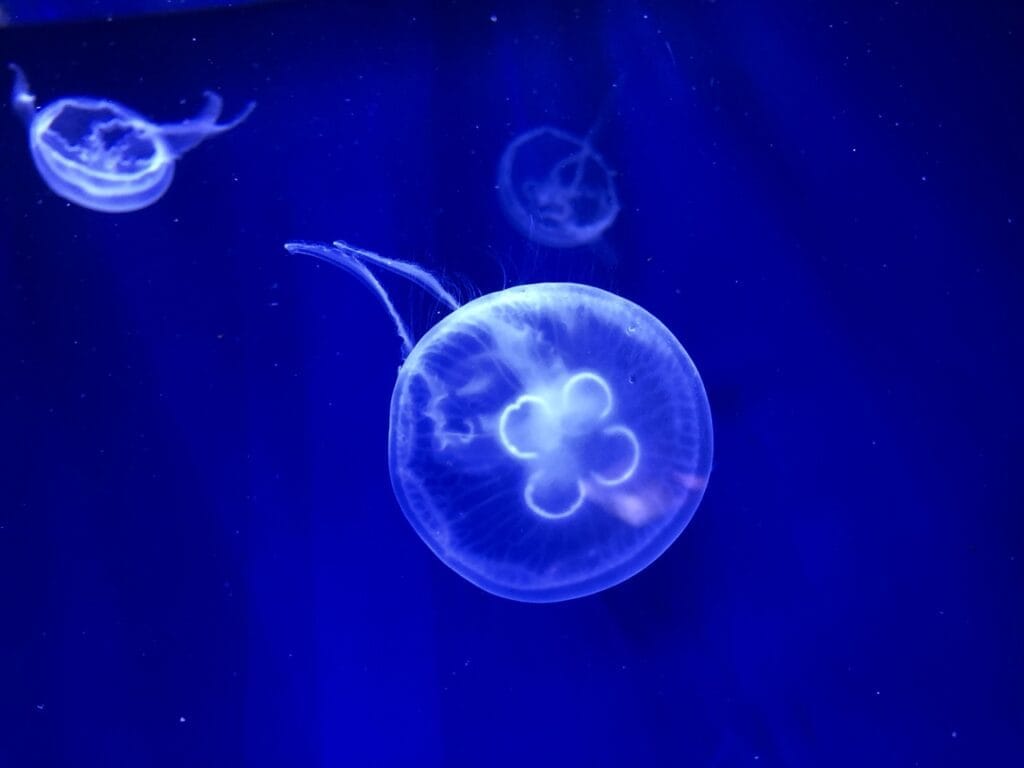
The moon jellyfish, also known as the common jellyfish (Aurelia labiata) can live in a wide range of temperatures, from -6º to 31º.
Pacific sea nettle
Chrysaora Fuscescens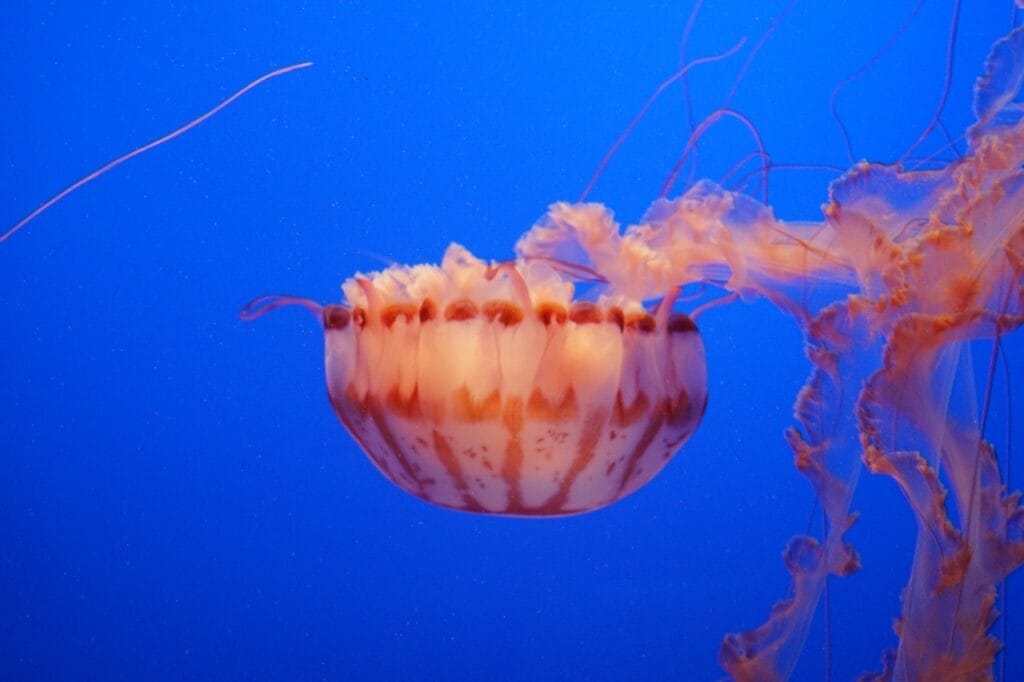
The Pacific sea nettle (Chrysaora Fuscescens) is possibly one of our most characteristic species, and can reach up to 4.5 metres in size.
Upside-down jellyfish
Cassiopea xamachana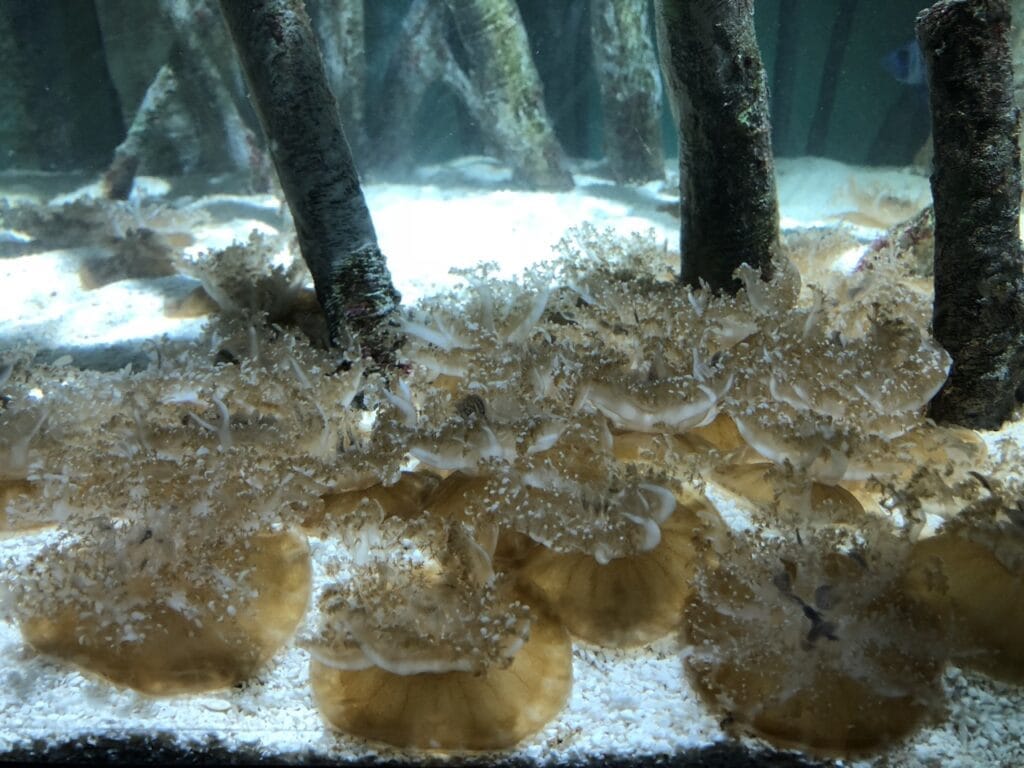
The upside-down jellyfish (Cassiopea xamachana) is so named because it usually has its bell downwards, supporting it like a suction cup.
White-spotted jellyfish
Phyllorhiza punctata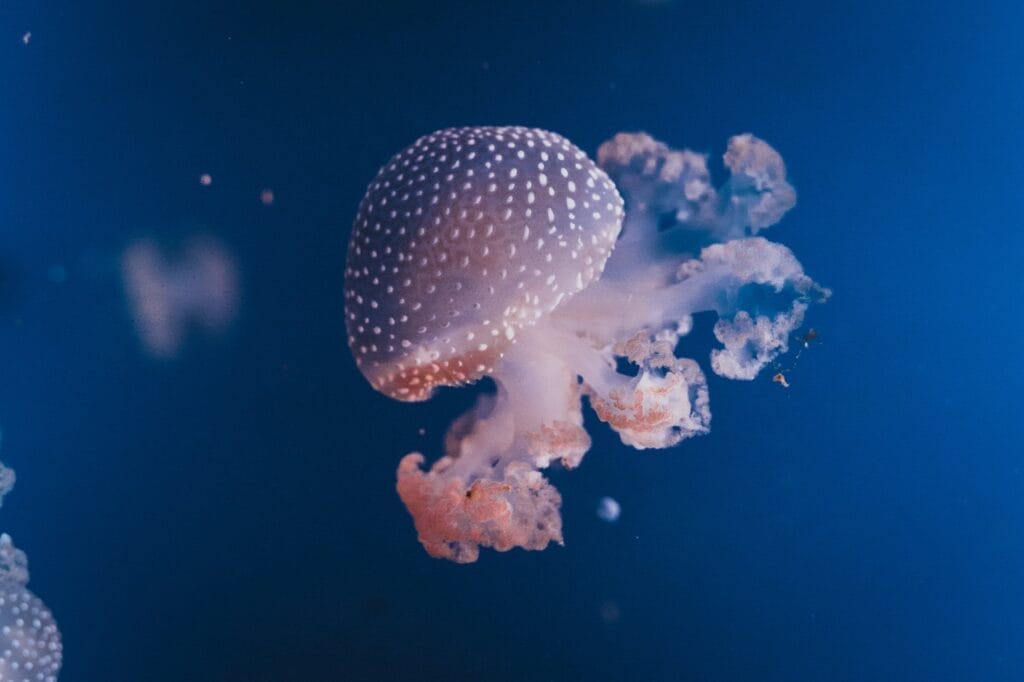
The white-spotted jellyfish (Phyllorhiza punctata) is an invasive species native to the Indo-Pacific. It is slightly stinging and does not pose a risk to human health.
